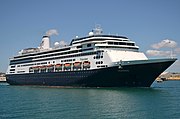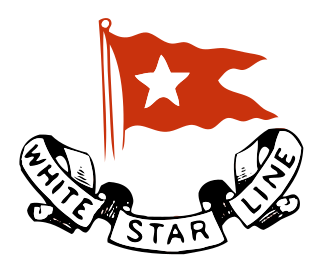
The White Star Line was a British shipping line. Founded out of the remains of a defunct packet company, it gradually rose up to become one of the most prominent shipping companies in the world, providing passenger and cargo services between the British Empire and the United States. While many other shipping lines focused primarily on speed, White Star branded their services by focusing more on providing comfortable passages for both upper class travellers and immigrants.

SS Oceanic was the White Star Line's first liner and first member of the Oceanic-class; she was an important turning point in passenger liner design. Entering service in 1871 for Atlantic crossings, she was later chartered to Occidental and Oriental Steamship Company (O&O) in 1875. The ship provided passenger service for O&O in the Pacific until 1895 when she was sold for scrap.
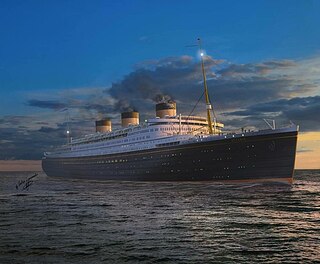
Oceanic was the planned name of an unfinished ocean liner that was partially built by Harland and Wolff for the White Star Line. It would have been the third ship bearing the name Oceanic, after the one of 1870 and the one of 1899. It was envisaged in 1926, with the idea of modernizing the transatlantic service of the company. With the arrival of Lord Kylsant at the head of the company, the planned size of the project increased, until it became that of a large ship destined to be the first to exceed the symbolic limit of 1,000 feet (305 m) in length and 30 knots in speed.
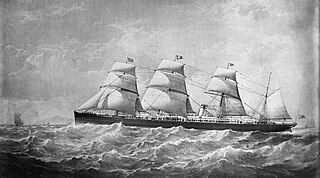
SS Atlantic was a transatlantic ocean liner of the White Star Line, and second ship of the Oceanic-class. The ship operated between Liverpool, United Kingdom, and New York City, United States. During the ship's 19th voyage, on 1 April 1873, she struck rocks and sank off the coast of Nova Scotia, Canada, killing at least 535 people. It remained the deadliest civilian maritime disaster in the North Atlantic Ocean until the sinking of SS La Bourgogne on 2 July 1898 and the greatest disaster for the White Star Line prior to the loss of Titanic in April 1912.
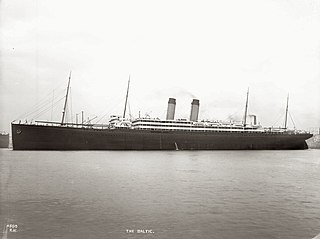
RMS Baltic was an ocean liner of the White Star Line that sailed between 1904 and 1932. At 23,876 gross register tonnage, she was the world's largest ship until May 1906. She was the third of a quartet of ships, all measuring over 20,000 gross register tons, dubbed The Big Four, the other three being RMS Celtic, RMS Cedric, and RMS Adriatic.

Majestic was a British Ocean liner working on the White Star Line’s North Atlantic run, originally launched in 1914 as the Hamburg America Liner SS Bismarck. At 56,551 gross register tons, she was the largest ship in the White Star Line and the largest ship in the world until completion of SS Normandie in 1935.

RMS Celtic was an ocean liner owned by the White Star Line. The first ship larger than SS Great Eastern by gross register tonnage, Celtic was the first of a quartet of ships over 20,000 tons, the dubbed The Big Four. She was the last ship ordered by Thomas Henry Ismay before his death in 1899. The second liner of her name she was put into service in 1901. Her large size and her low but economical speed inaugurated a new company policy aiming to favour size, luxury and comfort, to the detriment of speed.

RMS Cedric was an ocean liner owned by the White Star Line. She was the second of a quartet of ships over 20,000 tons, dubbed the Big Four, and was the largest vessel in the world at the time of her entering service. Her career, peppered with collisions and minor incidents, took place mainly on the route from Liverpool to New York.

RMS Adriatic was a British ocean liner of the White Star Line. She was the fourth of a quartet of ships of more than 20,000 GRT, dubbed The Big Four. The ship was the only one of the four which was never the world's largest ship. However, she was the largest, the fastest, and the most luxurious of the Big Four, being the first ocean liner to have an indoor swimming pool and a Turkish bath.

SS Adriatic was the first of two White Star Line ocean liners to carry the name Adriatic. The White Star Line's first four steamships of the Oceanic-class, the met with great success in the trans-Atlantic market, and the line decided to build two more. The first of these was the SS Adriatic, which was built by Harland and Wolff and launched on 17 October 1871; the second was the SS Celtic.

SS Baltic was an Oceanic-class ocean liner that was built in 1871 for the White Star Line. She was one of the first four ships ordered by White Star from shipbuilders Harland & Wolff after Thomas Ismay bought the company, and the third ship of the Oceanic class to be delivered. In 1888 Holland America Line bought her, and renamed her Veendam. In 1898 she struck a submerged wreck and sank, but with no loss of life.

SS Celtic was an ocean liner built for the White Star Line by shipbuilders Harland and Wolff of Belfast.

SS Arabic was a British-registered ocean liner that entered service in 1903 for the White Star Line. She was sunk on 19 August 1915, during the First World War, by German submarine SM U-24, 50 mi (80 km) south of Kinsale, causing a diplomatic incident.

SS Doric was a British ocean liner operated by White Star Line. She was put into service in 1923. She was the second ship of the company to bear this name. Built by Harland and Wolff in Belfast, she was the company's second and last ship to be exclusively powered by turbines, after SS Vedic.

SS Doric was a British ocean liner operated by White Star Line. She was put into service in 1883. Built by the Harland and Wolff shipyards in Belfast, she was the sister ship of the Ionic which was put into service a few months earlier. Although the original purpose of the construction of the two ships was not known with certainty, both began their careers chartered by the New Zealand Shipping Co. which operated them on the route from London to Wellington.

SS Belgic was a steamship of the White Star Line. The first of the company's four ships bearing this name, she was first assigned, with her sister ship, the Gaelic on the route to France and South America, where the company has recently tried to establish itself. The experience was short-lived, however, and at the end of the year, the Belgic was the last White Star Line steamer to serve on this route. She was then moved to the North Atlantic route.

SS Haverford was an American transatlantic liner commissioned in 1901 for the American Line on the route from Southampton to New York, then quickly on the route from Liverpool to Boston and Philadelphia. During her early years, this ship, mainly designed to transport migrants and goods, was the victim of several incidents. Her company was integrated into the International Mercantile Marine Co. (IMM) in 1902 and she was used by other companies within the trust, the Dominion Line and the Red Star Line.
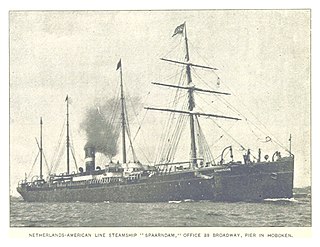
SS Arabic was a steamship of the White Star Line and its first steel-hulled vessel. Like her predecessors, she was built by shipbuilders Harland and Wolff of Belfast.

The Occidental and Oriental Steamship Company was an American shipping company founded in 1874 by US railroads wishing to provide competition to the Pacific Mail Steamship Company which had not complied with its obligations to them. Chartering vessels from different companies, the most important being the British White Star Line, the company quickly became financially successful, against the expectations of its founders.

The Oceanic class were a group of six ocean liners built by Harland and Wolff at Belfast, for the White Star Line, for the transatlantic service. They were the company's first generation of steamships to serve the North Atlantic passenger trade, entering service between 1871 and 1872.






















